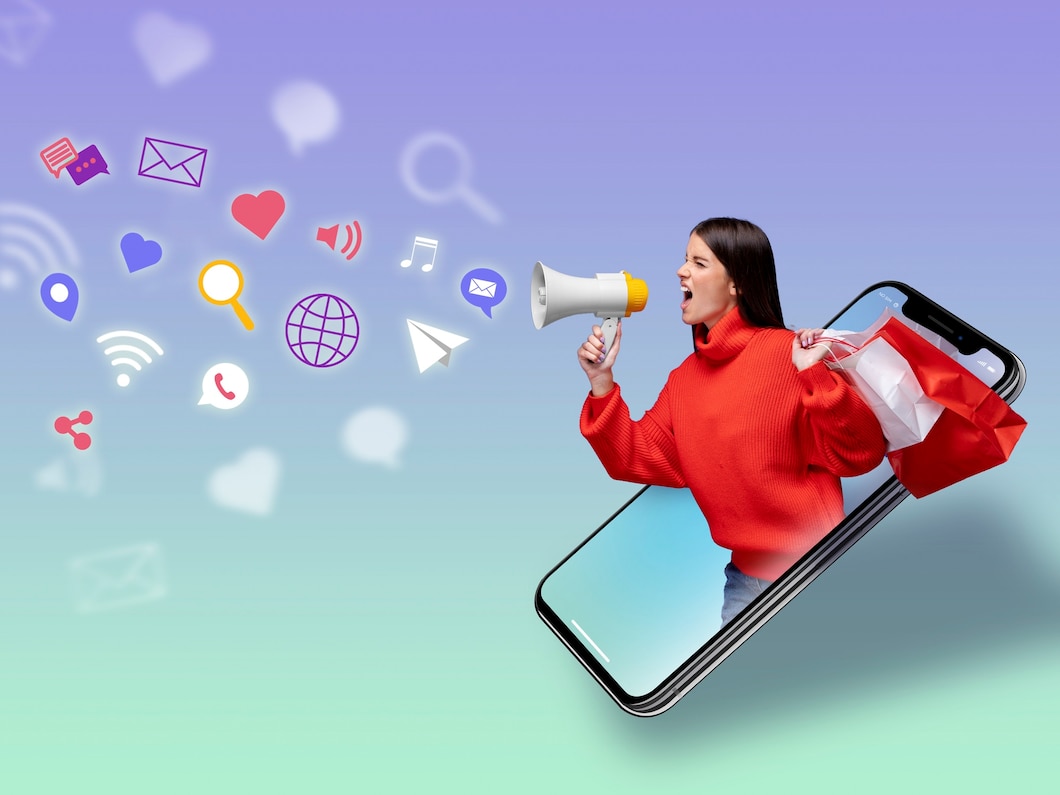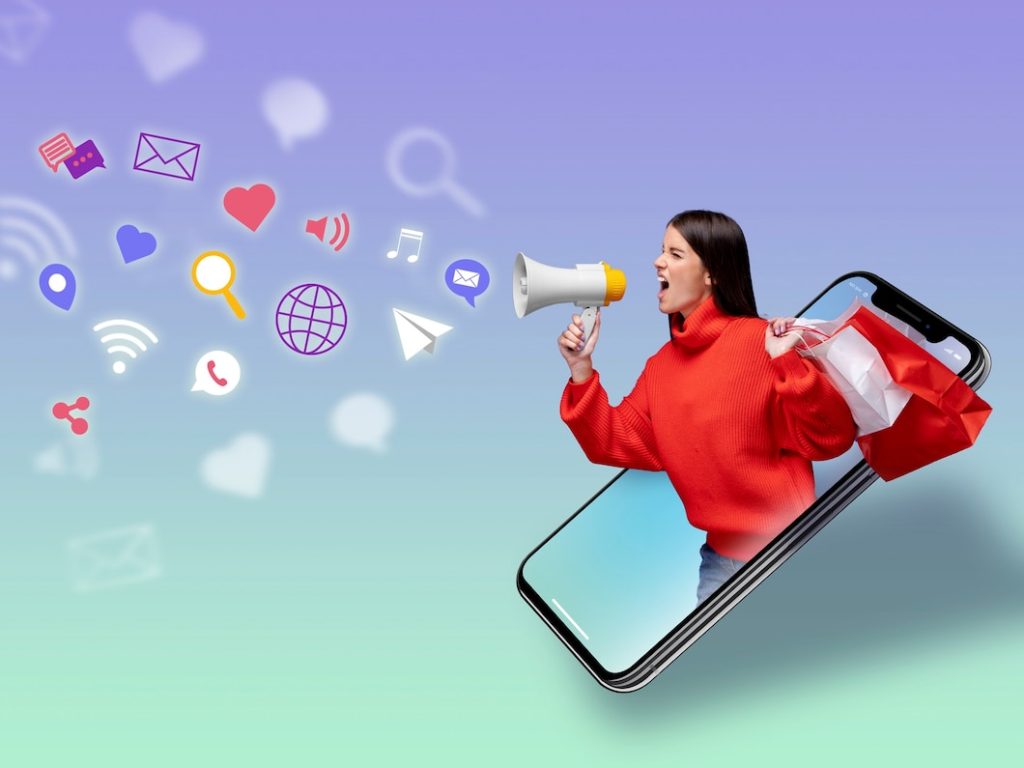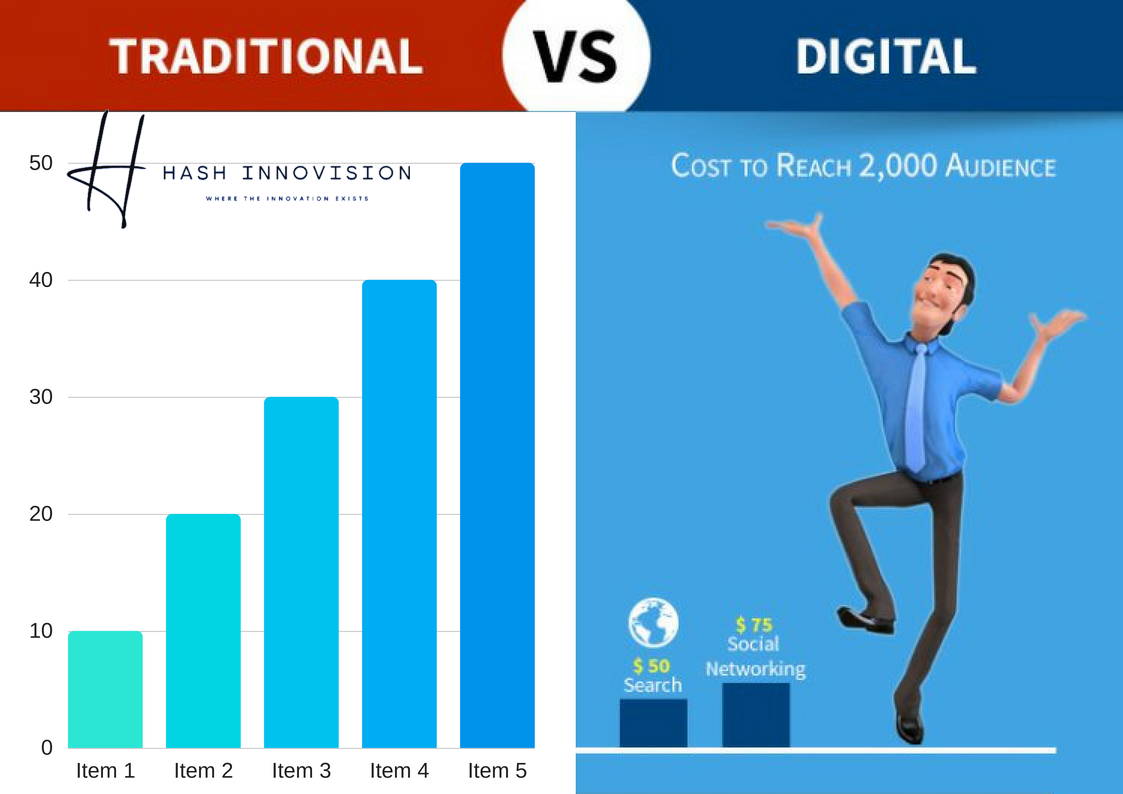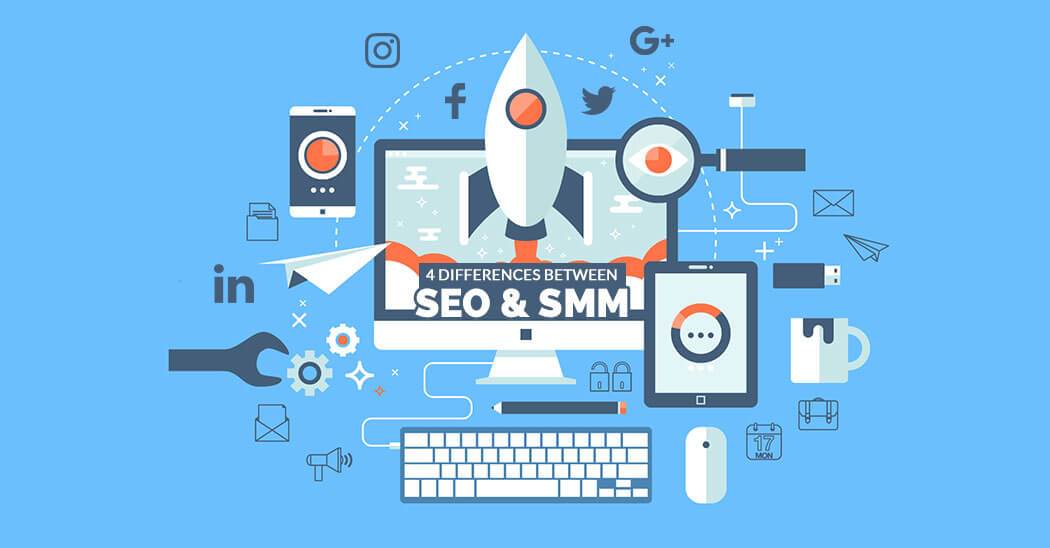Any marketing that uses electronic devices and can be used by marketing specialists to convey promotional messaging and measure its impact through your customer journey. In practice, digital marketing typically refers to marketing campaigns that appear on a computer, phone, tablet, or other device. It can take many forms, including online video, display ads, search engine marketing, paid social ads and social media posts. Digital marketing is often compared to “traditional marketing” such as magazine ads, billboards, and direct mail. Oddly, television is usually lumped in with traditional marketing.
9 Types of Digital Marketing:
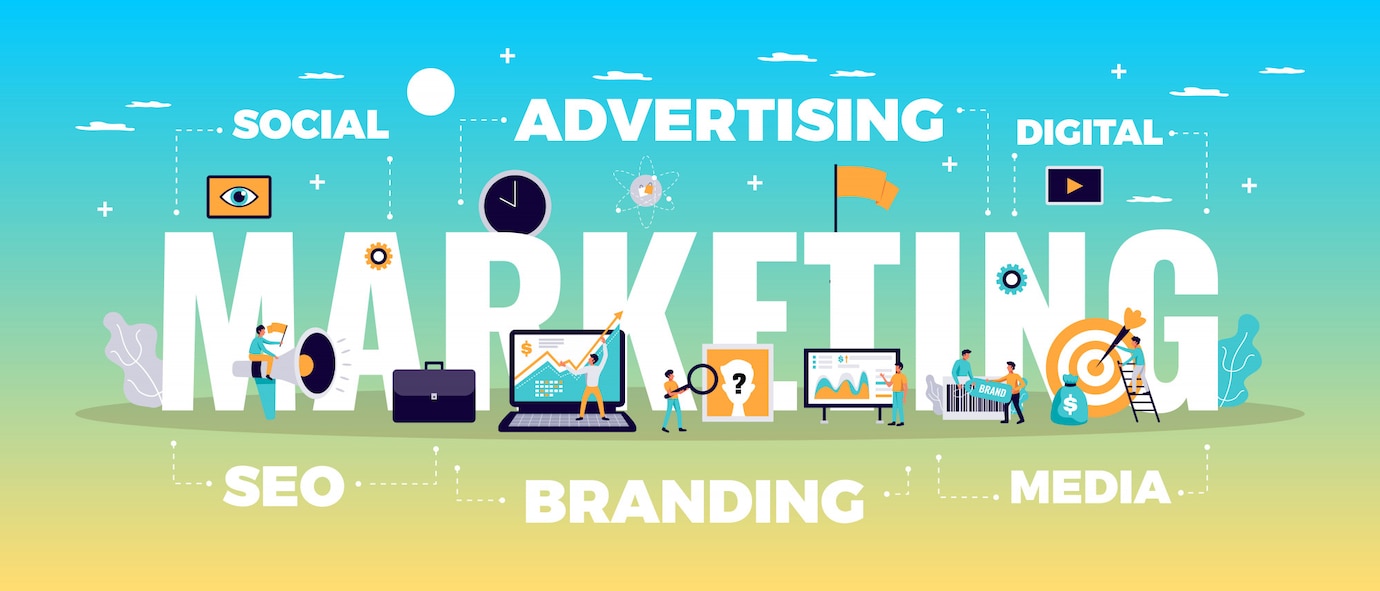
1. Content Marketing
Content marketing refers to informational, valuable content like blog posts, how-to videos, and other instructional materials. This type of marketing helps you connect with your audience and answer their questions. It can also help to generate leads and close sales.
Content should be published regularly with the target audience in mind. Ideally, your brand would become a trusted voice within the industry by publishing quality, reliable content. You want your audience to come to you first for information on the latest industry trends.
Pros
- It’s free of cost.
- Content is a highly versatile option. It allows you to build your brand by educating, entertaining and inspiring the audience.
- It fuels all the other types of digital marketing.
Cons
- The competition is high, it takes a lot of time to rank organically for target keywords.
- Consistency and high-quality is vital to be effective. Your content must meet your customers’ requirements while branding and achieving your business targets.
The Next Steps
Designing a simple and effective content strategy is the key to a promising beginning:
- Choose 4 to 5 core themes considering the customer needs and what your brand wishes to communicate to the masses.
- Decide the formats: video, audio, articles, or others.
- Finalize the channels you will use to post each piece of content.
2. Search Engine Optimization
Search engine optimization, (SEO), is the strategy of creating content in such a way that search engines like Google will rank your page high on the search engine results page (SERP).
Google uses algorithms to decide how relevant your page is to the keywords that the user is searching for. These algorithms update frequently, and SEO strategies must be adjusted just as regularly to remain effective.
When done properly, SEO efforts will put your page at the top of the SERP and bring in more organic traffic.
Pros
- It increases the brand visibility.
- It is cost efficient, compared to PPC.
Cons
- SEO depends on content and tech.
- Google’s changing algorithms might come in the way of your efforts.
- It takes time for SEO to work.
The Next Steps
- SEO begins with good content. Follow a good content strategy and do keyword research to discover what people search for.
- Stay updated on Google’s recommendations for content.
- Beginners opt for a plug-in that would assist them in optimizing their site (e.g. Yoast for WordPress).
3. Search Engine Marketing/Pay-per-Click
Search engine marketing, or SEM, refers to paid advertisements that appear at the top of the SERP. The cost of these ads typically depends on the number of clicks the link receives, hence “pay-per-click.”
When you pay for these top SERP slots, the “Ad” label will appear next to your URL. Despite consumer knowledge that these are ads, many still click on these links, and it can be a very effective digital marketing strategy.
Pros
- It helps attain a top rank quickly.
- It is time efficient.
Cons
- It can often be expensive to target popular keywords.
- Most people are skeptical of ads in the search results and prefer to trust the natural search results.
The Next Steps
You can opt for PPC to generate more leads. Do keyword research and then experiment with different targeting combinations to see what works.
4. Social Media Marketing
With social media marketing, social media platforms are used as a digital marketing channel. Ads can be bought to reach out to a new audience, or you can create a profile for your business on any social media platform and create posts to advertise new products, sales, or freshly published content.
Which social media platform you will use will depend on the type of audience you want to reach. For example, according to Pew Research, Instagram is best for reaching audiences between the ages of 25 and 29, while those 65+ can be best achieved through Facebook.
Pros
- It has high conversion rates.
- The efforts multiply quickly as people like, comment, and share your content.
- Facebook/Instagram ads allow you to target specific customer segments and convey your message to the right people.
Cons
- Social media is challenging. The algorithm changes every now and then. Along with that, new content formats are introduced frequently. You will have to gun for updates constantly.
- Although it sounds simple to post on social media, you require strategic planning and dedication of enough time to do it consistently and efficiently.
The Next Steps
Make your social channels a part of your content marketing strategy. Decide your content creation, the format and the channels you would distribute your ideas. This marketing technique requires you to create a calendar wherein you can mark the days for posting on a particular channel and the days for posting on the other. Since social media is an interactive platform, you must also respond to your customers in addition to publishing high-quality content. Real conversations help gain trust and improve brand loyalty.
5. Affiliate and Influencer Marketing
Working with an affiliate or influencer can help increase your audience reach by engaging with their existing audience. For an effective affiliate/influencer relationship, try to work with an individual who is well-known and respected within your industry. They can create content promoting your business or product and share a link to your website. Every time a sale is completed, or a link is clicked, the influencer/affiliate will receive a kickback.
Pros
- You get the privilege of the influencer’s existing audience. So, you need not wait to build one yourself.
- Associating with a popular personality allows you to earn genuine followers and customers.
Cons
- It is not just about paying a high amount to partner with influencers. You have to decide on the right influencer based on your audience and brand and figure out authentic ways to partner with them.
- The distrust of influencers is rising, and you need to be careful and transparent about paying them for promotions.
The Next Steps
Finalize what you expect from your influencer marketing campaign. Create a list of possible influencers who seem to be a good match for your brand. Get in touch with them and negotiate your terms considering theirs.
6. Email Marketing
When someone visits your website or business, invite them to join an email subscriber list. With their permission, you can send emails about sales, special events, or product releases. Email marketing is often underestimated, and according to Lyfe Marketing, approximately $40 of revenue is brought in for every dollar spent on email marketing.
The most important part of this digital marketing channel is that it should provide value to your audience. Offer them exclusives that they would not receive anywhere else, and you can build a mutually beneficial relationship that will increase brand loyalty.
Now that we have understood the types of digital marketing, let us next look into the details such as when and how to use the different types of digital marketing.
Pros
- Amongst several types of digital marketing, this one is independent of any changing algorithms.
- Staying constantly in contact with your email list allows you to strengthen relationships, and they are likely to keep you in their minds when they plan to buy.
Cons
- Often customers do not open emails.
- It gets difficult to find ways to add value so that the customers do not unsubscribe.
The Next Steps
- Select an email software such as ConvertKit, GetResponse, or Mailchimp.
- Collect your target customer’s emails.
- Give them a reason to opt for your mails, such as offering step-by-step pdf guides and free design templates.
- Pay attention to the regulations.
- Maintain consistency and contact your list regularly via the weekly newsletter. Add value to your content rather than just the promotions and sales messages.
7. Mobile Marketing
As per Google research, 27% of people worldwide use mobile voice search. The mobile consumer journey is on an exponential rise. Digital marketing requires immediacy as much as loyalty, and smartphones are one of the most immediate problem-solving partners anywhere, anytime.
Mobile marketing is mandatory for brands who desire to be with their customers, side by side. It requires the marketer to adapt everything he is doing on the desktop to mobile. You must also be efficient in mobile-specific tasks such as in-app advertising, texting, and social messaging apps. It is significantly important for brands that target a younger audience.
Pros
- Customers spend more time on mobile phones than on their desktops/laptops these days. So, mobile marketing helps in reaching where they spend most of their time.
- It can be super-targeted with geo-fencing or specific audience segments.
Cons
- The space is small as compared to computers.
- Mobile ads have a low click rate.
- People often dislike interruptions by marketing messages when they are communicating.
The Next Steps
Optimizing your website and content for mobile is a prerequisite. It must work and look good on all devices. You can create an app, adopt instant messenger marketing, and offer services by geolocalization. Some quick tips for your next step are:
- Keep things simple and short.
- Use clear text and big buttons.
- Put captions on your videos to convey your message to people who have the sound system muted.
8. Video Marketing
In today’s fast-paced scenario, short and quick videos are quicker than texts in attracting customers. Be it educational or entertaining, live or pre-recorded video content is a reliable digital marketing option. Today, over 2 billion people look for something or the other per month on YouTube. It is a promising opportunity to reach new customers, and video marketing strategies drive results throughout the marketing funnel.
80% of customers opt for search engines and videos to learn about products and check reviews. 55% of consumers do it before buying.
Pros
- Videos can create an emotional connection with the masses and effectively spread your message.
- They are more memorable than text or images.
- Facebook, Instagram, and LinkedIn—all channels are pushing video content to enhance reach and engagement and thus rank higher in search results.
Cons
- It gets challenging to grab the viewers’ attention in seconds. Users quickly shift to the next content in their feed.
- Creating high-quality video content consumes time, money, and skill.
The Next Steps
Make video a part of your content marketing strategy. Get specific and decide whether you wish to add inspiration, education, or entertainment. Staying focused on your objectives helps you attain your marketing goals more quickly. Initially, you do not require perfection or high production values. Pay attention to lighting and sound to make your videos clear and professional.
9. Audio Marketing
Radio has been customers’ favorite since the Golden Age of commercial broadcasting. From the 1920s till today, a section of people still listens to the radio regularly switching from traditional radios to internet radio. Channels like Spotify help advance audio marketing. Audio marketing is much broader as it includes podcasts and smart home assistants such as Google Home or Amazon Alexa.
Podcasts are increasingly consumed, and they take the audience off the radio. People prefer them when working out or doing other mechanics. To ace audio marketing, you must understand the habits of your target audience. Think about the activities they might do while listening to your audios. This way, you can make audio marketing a big sales opportunity for your brand.
Pros
- Be it radio or podcasts, audio marketing offers a convenient medium for on-demand and on-the-go for a busy audience.
- It is easier and cheaper to produce audio content than video.
Cons
- Multitasking listeners can get busy and might not take the next step.
- Marketing via smart home assistants is still in the experimental stage, and there is a steep learning curve.
- Lower chances of immediate return on investment.

